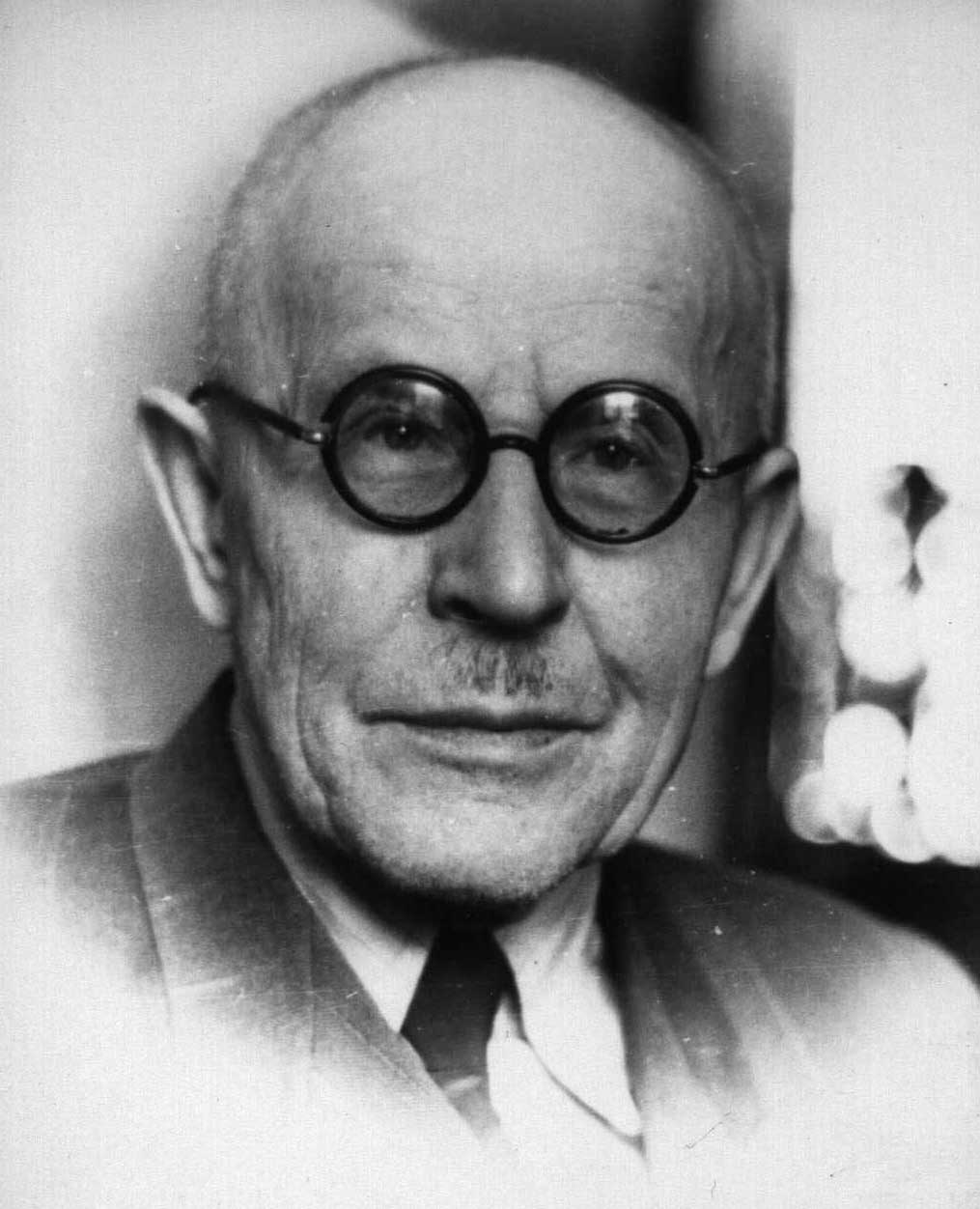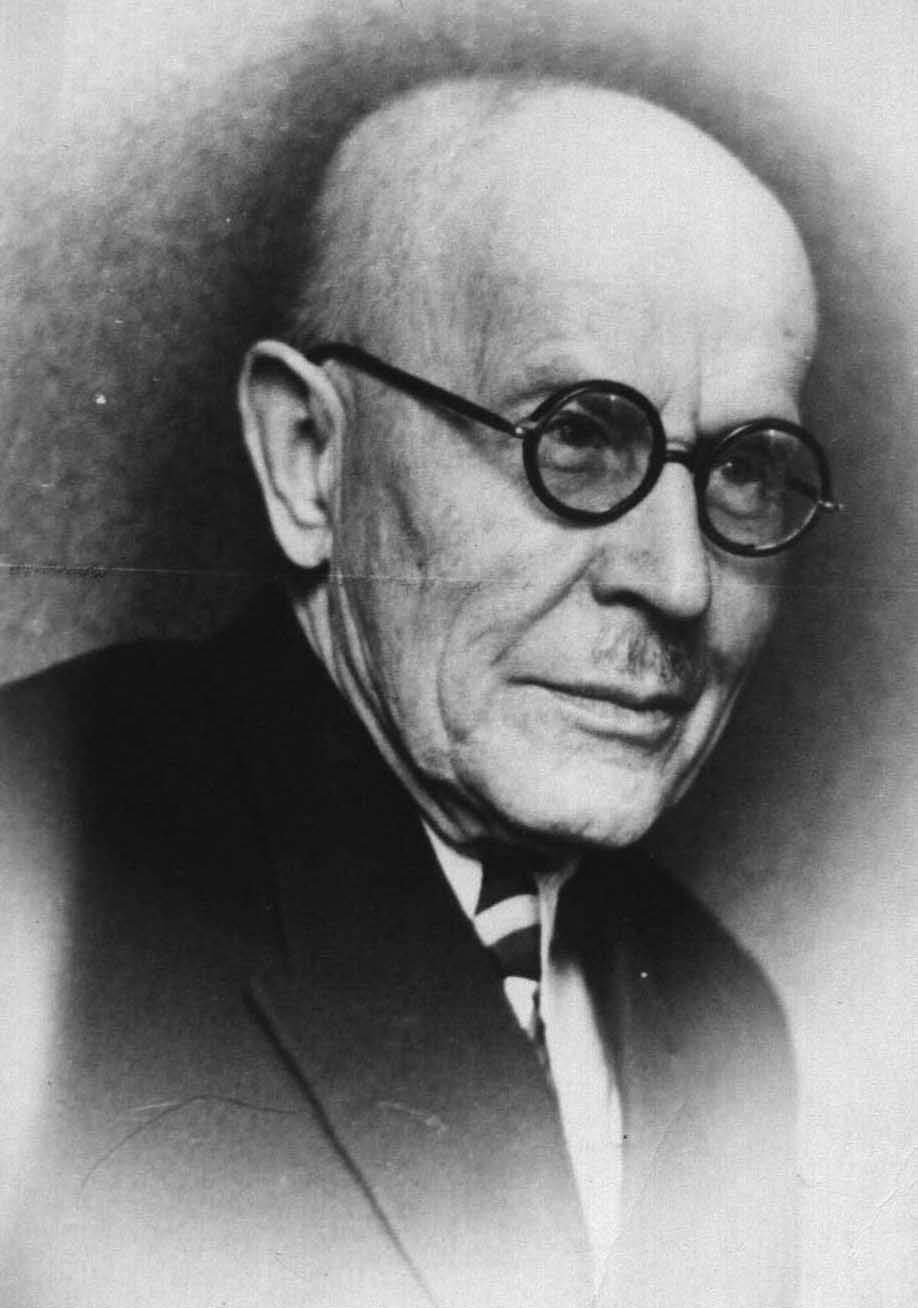

Bondartsev Apollinariy Semenovich, doctor of biological sciences, professor, honoured worker of sciences of Russian Federation was born on 5 August (23 July in the unreformed calendar) 1877 in Kursk (central Russia) in a noble family with modest means. After leaving a college he studied agricultural sciences at Riga Polytechnic - one of the best high schools of the old Russian empire. There he have met Prof. T.V. Bucholtz, who became his preceptor in mycology and plant pathology and gratifying memory of whom he kept all his life. After graduation in 1903 with the degree of agronomist of the 1st category he returned to Kursk to act as province assistant agronomist. His first research, on parasite fungi of Riga suburbs, was published in 1903 and later he continued his scientific activity in Kursk. At the beginning of 1905 Ppof. Bucholtz recommended him to the job on Central Plant Pathology Station attached to the Imperial Botanical Garden after Peter the Great [now the V.L. Komarov Botanical Institute, Russian Academy of Sciences] to work under the guidance of Prof. A.A. Jachewsky, the most famous Russian mycologist of that time. From 1913 he became a head of the Station re-organized to that time to the Department of Plant Pathology of the Imperial Botanic Garden and left on this post till 1931 when the department was joined with the Institute of Cryptogamic Plants and transformed to the Department of Cryptogamic Plants of the V.L. Komarov Botanical Institute. In the new department A.S. Bondartsev headed the sector of mycology until its closure in 1950.
His activity as plant pathologist and mycologist from the beginning was multiform, including both practical and scientific directions. As plant pathologist he answered thousands of inquiries on plant diseases and measures of plant protection through scientific and popular journals, and by individual responses. Parallel with it he organized the edition of so named "School herbarium of cultural plants' diseases" where herbarium specimens were accompanied by descriptions and drawings of plant parasite. To the same purpose served numerous leaflets and placards on the most distributed plant diseases. Principal part of these popular editions were made by himself. As practising plant pathologist he regularly visited different regions of European Russia, the Caucasus and the Urals where he collected data on plant diseases, headed organization of protection measures, gave instructions to the agronomists, trained to perfection fungicides.
As department head he organized herbarium and museum of plant diseases, composing new fixative liquids for the exhibit, taught young specialists, edited journals "Materials on mycological and plant pathological investigations of Russia" (1914-1921), "Plant diseases" (1923-1931), which were first special periodical editions on the problem in Russia. A.S. Bondartsev was the permanent participant of all agricultural exhibitions, always receiving medals for his expositions.
As investigator A.S. Bondartsev worked much during these years on study of biology of the most distributed agents of plant diseases, of biodiversity of fungi in the visited regions. He published floristic lists, described new species including pathogens of agricultural plants (Septoria humulina Bondartsev, Ascochyta orientalis Bondartsev etc.). The most interesting among these fungi was Botrytis anthophila Bondartsev - agent of sterility of the flowers of trefoil, biology of which was described in details. When describing new species of hyperparasite Gloeosporium polystigmicola Bondartsev he indicated to the possibility to use this fungus as biological agent of plant protection. The results of his activity as investigator and practical man in plant pathology were summarized in his book "Cultivated plants' diseases and its protection" firstly published in 1912, and later on edited again in 1927 and 1931. During decades this book was the only and the best hand-book and manual to the several generations of plant pathologists.
At the same time A.S. Bondartsev attended to the wood destroying fungi which later on became the main topic of his investigations. The first paper on polypores of Kursk province was published in 1908. Later on appeared the papers on Hymenomycetes of the different territories of European part of country, Caucasus and Ural (1912, 1914, 1916, 1927 etc.) as well as publications on taxonomy of the group and treatments concerning of house-fungi. That years were marked by the activity of A.S. Bondartsev in creating of the herbarium of Hymenomycetes in his institution. It was based on his own collections but at the same time he received many specimens from another people who have sent its to him for the identification. At the first steps in study of Hymenomycetes he contacted with such famous authorities of that time as J. Bresadola, P.A. Karsten, H. Bourdot and the others. In 1931 the department of plant pathology and corresponding scientific field were shut in the Botanical Institute. From that year A.S. Bondartsev fully dedicated himself to the study of taxonomy of Hymenomycetes, especially of polypores. From 1935 to 1941, with R. Singer, he proposed a new classification system for polypores touching at the same time the whole group of Basidiomycetes. The system being published in Annales Mycologici (1941) was a new word in the systematics of the group and immediately attached the attention of the world mycological community. The system received highest practical realization in a famous book of A.S. Bondartsev Polyporaceae of the European part of the USSR and Caucasus (1953). The book was at once generally recognized both in the country and abroad. It stimulated the subsequent study of the group in a country and till this time keeps its importance as a good origin of the different data. In 1961 the book was translated to English. This book was the peak of his scientific achievements as a taxonomist.
Later, he made any other important treatments. Among those were published "Colour scale" (1954) that became an official scale on describing of microbial colonies in Soviet science and made its author known to the people that were far from mycology. His album of colour plates "Manual for identification of domestic fungi" (1956) - the last and the most full publication of A.S. Bondartsev on this specific group of fungi. His official job at the Botanical Institute continued till his retirement in 1965.
During this last period of his activity A.S. Bondartsev published a series of the papers on polypores of the Soviet Far East and Siberia, as well as some theoretical treatments - "On change of the systematic position of some genera and species of Polyporaceae" (1959), "On change of the systematic position of the genus Aporpium" (1960, with M.A. Bondartseva) and some others. Last years he became to issued first 50 species of "Fungi exsiccati URSS", but unfortunately next issues were not edited. Till the last years of his activity he gave consultations on the questions of storage of vegetables and fruits, on protection of wood in buildings being an expert of Architectural board of Leningrad.
Throughout the Great Patriotic War [Second World War] he remained in Leningrad [St Petersburg], continuing his scientific job, keeping a watch for bombs on the roofs of the institute buildings, and sharing the terrible hunger and danger of the seige with other citizens of the town. After the war he was decorated with the "Defence of Leningrad" medal.
Apollinariy Semenovich Bondartsev was one of the famous founders of Russian mycology. Over 200 publications belong to him and over 500 small notes in the different journals, encyclopaedias, dictionaries etc. Besides above-named merits he was decorated by some other soviet orders and medals including the highest one - "Order of Lenin". For a man who did not belong to the communist party it was a rare honour.
When being already recognized authority A.S. retained the best strains of his youth. He kept all his life a grateful memory of his teacher, Prof. Theodore Bucholtz. He left modest, kind-hearted, very democratic in relationships that attracted to him people. In different years under his supervision worked or received constant consultations over 100 specialists. With many past students and colleagues he maintained friendly relationships. After his retirement practically all the mycologists - guests of the Botanical Institute tried to visit him and to pay their respect, to ask advice or any request.
A.S. Bondartsev was married twice. His first wife Vera Nikolaevna Bondartseva-Monteverde was a daughter of his colleague, the principal botanist of the Imperial Botanical Garden and a well-known plant physiologist. Under the influence of her husband Vera Monteverde became a mycologist and successfully worked on parasite fungi till her death from cancer in 1944. Later, he married a friend of his first wife, who was far from mycology on the line of work but after marriage became a faithful assistant of her husband in his work and a true keeper of his hearth. A.S. Bondartsev was a good graphic artist and tasted himself as a painter. He was a constant visitor of dramatics, but was fond of music too. His second wife being a professional singer routinely sang at home accompanying to herself on the piano. The memory about first home lady - Vera Monteverde was cultivated and maintained all the years of the life of every of them.
Lists. Publications. Taxa. Kirk & Ansell form of name: Bondartsev.